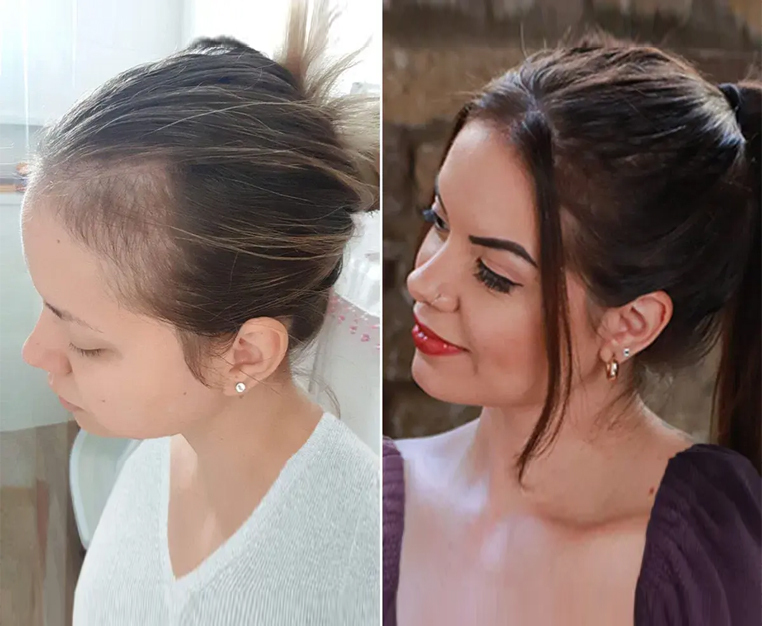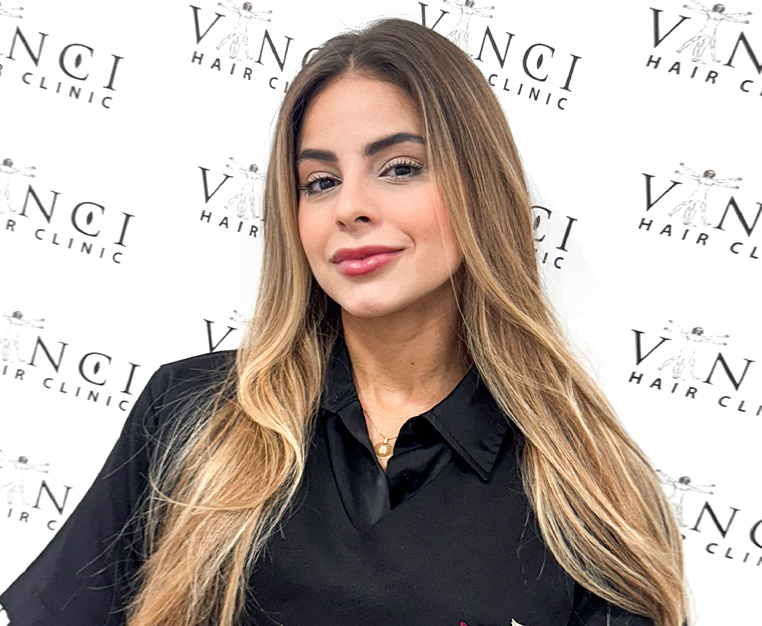Supermodel Ashley Graham is someone who likes to keep it real. She’s a successful, plus-size woman in an industry that typically shuns women with fuller figures. She regularly posts photos of herself in unflattering poses, pictures that show her without makeup or sporting armpit hair or a broken front tooth. It’s probably not surprising, therefore, that she spent much of 2022 keeping her Instagram followers updated on her battle with something most women find hard to discuss. Graham gave birth to twins in 2022 and, in the months that followed, she shared photos showing her postpartum hair loss.
It’s a painful subject for many women. Some even feel unable to acknowledge or discuss it. Read on to get answers to some of the questions most frequently asked about the condition.
What Causes Postpartum Hair Loss?
The condition is caused by hormonal changes in the body. During pregnancy, elevated levels of oestrogen and progesterone cause the hair follicles to enter a resting phase and delay shedding, leading to thicker hair. After the birth, hormonal levels return to their pre-pregnancy state and the delayed shedding occurs, resulting in a dramatic increase in hair fall.
But that’s not the whole story. Many women also suffer from telogen effluvium (TE) at this time. TE is a type of hair loss triggered by stress, trauma or illness, three words that can, at times, be applied to some stages of pregnancy, childbirth and caring for a newborn baby. For some women, the experience can be enough to move their hair from the anagen or growth stages into the telogen or shedding phase.
What is the Timeframe?
Postpartum hair loss usually begins around 2-3 months after giving birth and can last for 6-12 months. It’s important to note, however, that every woman’s experience is unique. The timing and severity of hair loss can be influenced by various factors such as genetics, overall health and lifestyle. So, while some women lose a significant amount of hair, others can sail through this period without noticing any change at all. If hair loss persists for an extended period or is accompanied by other symptoms, it is important to consult a doctor to rule out any underlying medical conditions.
Will My Hair Grow Back?
Postpartum hair loss is usually temporary. After the initial period of increased shedding, the hair usually returns to its normal growth cycle and thickness. That’s because postpartum shedding does not cause any change or damage to the hair follicles. So, leave your hair alone and it will fix itself. However, that’s cold comfort if you’ve lost a lot of hair. Being told to wait patiently for it to grow back doesn’t sound like much of a plan in those circumstances.
While there is no specific treatment for postpartum hair loss, there are some things that can help manage the condition and speed up the re-growth process.
What Are the Available Treatments?
Two treatments that are eminently suitable for treating postpartum hair loss are platelet-rich plasma (PRP) and mesotherapy. PRP uses a centrifuge to spin a small quantity of the client’s blood to separate the platelets and plasma from other components. The concentrated plasma that results from this process contains stem cells that stimulate inactive hair follicles to produce new growth once it is injected into the scalp.
Mesotherapy is a process that also involves injections into the scalp to assist hair growth. The solution injected can vary from clinic to clinic but often contains a cocktail of vitamins, minerals and DHT blockers. Iron and biotin are commonly used. It’s a more direct way of getting these ingredients to where they are needed.
Helpful lifestyle changes include reducing stress through activities such as exercise, meditation, or massage. You can also shake up your haircare practices to ensure you’re not doing further damage to your strands. That means avoiding putting your hair up in tight hairstyles, something that could lead to traction alopecia. It also helps if you steer clear of harsh hair treatments, such as hot rollers or chemical relaxers, and use gentle, sulphate-free shampoos and conditioners.
Conclusion
Ashley Graham outlined the reasons for posting photos of her postpartum hair (and for discussing other aspects of motherhood), by explaining that, “I wanted to show you guys that it’s not all rainbows and butterflies!” Hopefully, her story will help other women struggling with the condition. Recent photos of the model sporting a glam new hairstyle at an event in New York City show that this condition passes.
If you’re worried about the condition of your hair, speak to a hair specialist at Vinci Hair Clinic. We’re one of the biggest names in the hair restoration business, with a network of clinics around the world. As a new client, you’re entitled to a free, no-obligation consultation at one of our clinics or over the phone using photos. Get in touch and book your appointment today!


